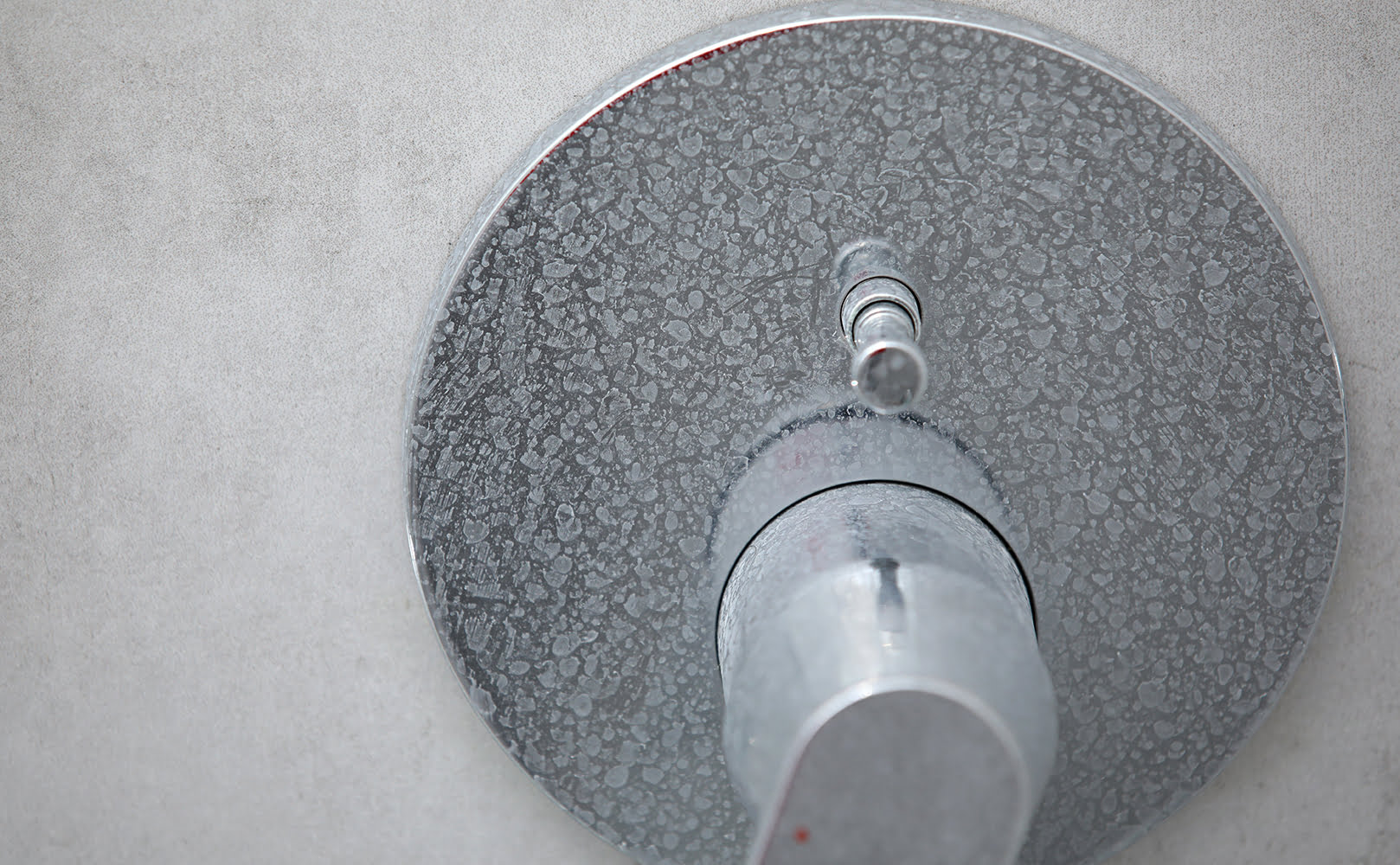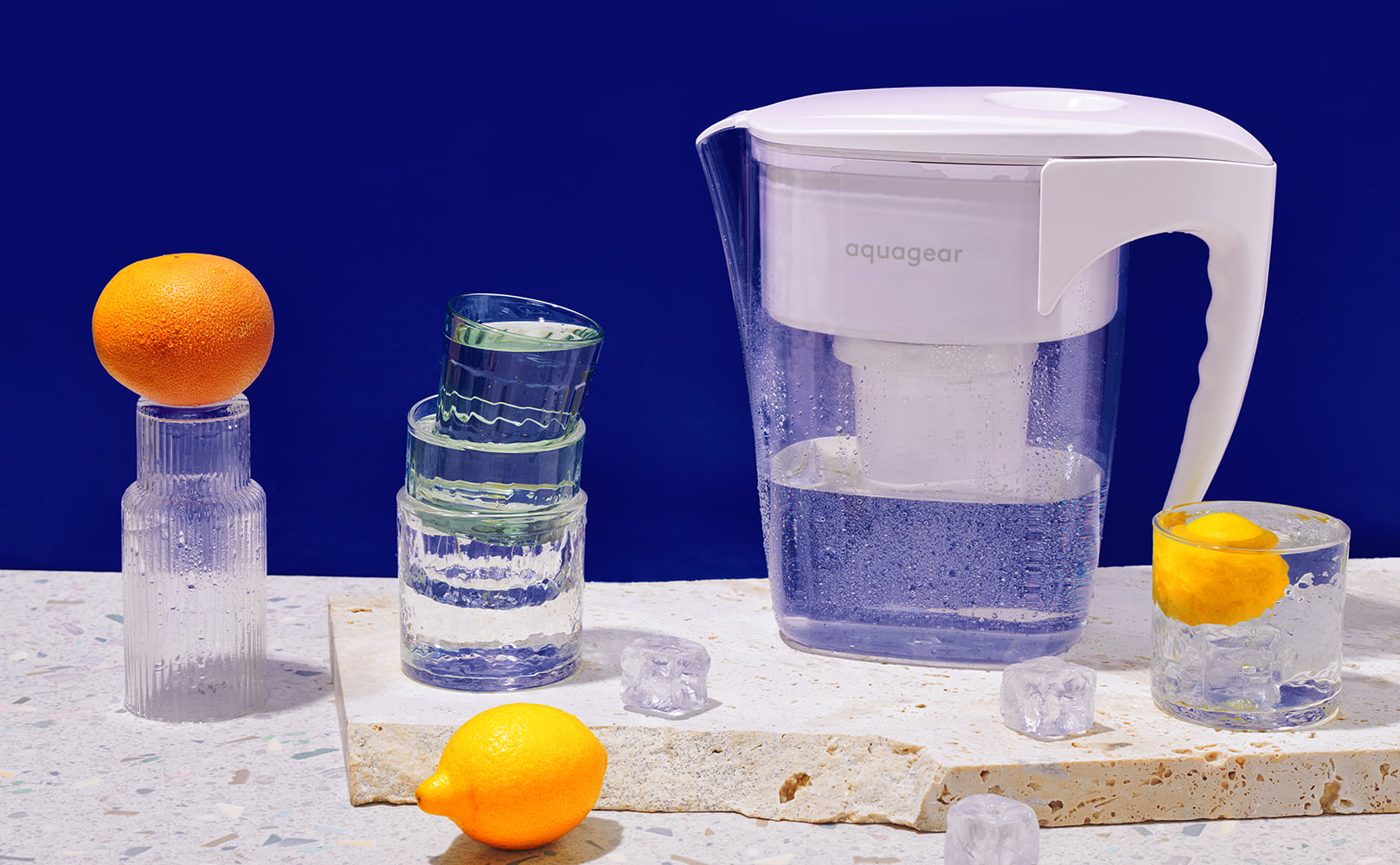How to Remove Limescale from a Water Filter Jug
Written by: Dan Eder // Last Updated: Sep 27, 2022
This page may contain affiliate links. If you buy a product or service through such a link we earn a commission at no extra cost to you. Learn more.
This post was created in collaboration with Aquagear. We thank the author Dan Eder for the time and effort he put into this. Over to Dan!
Limescale can cause unsightly white splotches on your water filter jug and glasses. Moreover, it can leave your water tasting bitter, salty, or just plain “off”.
Drinking water with limescale poses no health risks, but it’s still important to understand what limescale is and how you can clean your water filter jug so it doesn’t affect you. That’s why we put together this quick guide to eliminating pesky scaling from your water filter pitcher.
Read on before you pour another glass!
Key Takeaways
In order to remove limescale from your water filter jug:
- Take out the filter cartridge.
- Pour white vinegar into the jug and wait for about 30 mins. As an alternative, you can also use apple cider, malt vinegar, or lime juice solution.
- Scrub the entire pitcher (jug, lid, reservoir) using a kitchen brush.
- Rinse with clean water.
- Put everything back together.
What Is Limescale?
Limescale is a natural build up of calcium carbonate that occurs in pipes, kettles, and boilers.
Typically found around hot water sources, limescale is usually hard and chalky and ranges in color from off-white and grey to pinkish brown, depending on what other minerals are mixed in with it. This residue is actually what is left over when the water is heated.
Limescale is usually more prevalent in your pipes and water filter jug if your home uses hard water. It’s not too bad for people, but if left untreated, limescale can cause damage to appliances. You’ll also end up using more cleaning products and spending additional time to clean up the mess.
Water filter pitchers like Aquagear are not designed to remove healthy minerals, so there may occasionally be some limescale build up. If limescale is a problem in your home, you may have noticed that your water filter pitcher and glasses have developed an unpleasant white film. Your filtered water may start to taste bad, too.
The only negative health effect associated with drinking limescale in water is dry skin. In fact, a certain level of these minerals in the human body is normal and healthy. That being said, if your water tastes bad, you probably won’t want to drink it. And being dehydrated does have a major negative effect on your health!
Luckily, there is an easy way to remove limescale from you water filter pitcher. Follow these simple steps and you’ll be able to eliminate any limescale build up quickly and easily.
How to Remove Limescale from a Water Filter Jug
You may have come across limescale build up in your water filter pitcher or you may be new to home filtration, in which case you need to know what to expect.
1. Take Out the Filter Cartridge
You’ll need to access all of the components of your filter jug to give it a thorough cleaning. The first step to cleaning out the water filter pitcher is taking off the lid and removing the filter cartridge. This should be simple enough but may vary slightly from brand to brand.
You probably are familiar with how to do this from changing the filter cartridge on your pitcher. For best results, you should be replacing your filter every few months, depending on how often you use it. Different manufacturers will have different pieces of advice, and some filters are more durable than others.
Once you’ve got the filter on your pitcher out, you can take apart all the other components of the water filter jug and get ready to clean them.
2. Pour White Vinegar into the Jug and Wait
White vinegar is a common cleaning agent for those who prefer to avoid industrial chemicals and to take a more organic approach. You may already have a bottle somewhere in your home. If not, we recommend picking one up because they’re useful for lots of different household projects.
For the best results, make a solution that is equal parts white vinegar and lemon juice and pour it into the jug. If you don’t have lemon juice, white vinegar alone should work just fine.
And if you don’t have white vinegar, you may try using apple cider vinegar, malt vinegar, or a lime juice solution. Give it a shot, but results may vary. (And let us know if you have a special recipe!)
The key is to choose an agent that is acidic, because acidic solutions break up the limescale. Once you’ve poured the vinegar into the jug, wait about 30 minutes for the solution to work its magic.
3. Scrub Using a Kitchen Brush
Now it’s time to roll up your sleeves and do a little scrubbing. Luckily, a water filter jug is not a huge surface area to scrub. Still, you’ll want to make sure you clean every nook and cranny by hand. This includes the pitcher, lid, and reservoir.
Give the water filter pitcher a thorough scrubbing using a scrub brush. Make sure to use a scrub brush that won’t scratch the pitcher. You could also use fine grade steel wool.
Scrubbing by hand is the most efficient way to descale your water filter pitcher, and it’s important to note that not all pitchers are dishwasher safe. Aquagear and most other brands recommend regularly cleaning your water filter jug with hot soapy water every 2-3 weeks to eliminate bacteria, so this is a perfect time to also use white vinegar for limescale.
If you’ve noticed limescale build up on your other kitchen appliances as well, you can use the white vinegar as a descaling agent there, too. Just make sure to avoid all electronic components with the solution.
4. Optional: Even More Soaking and Scrubbing
For stubborn scaling you may need to repeat this process more than once. This has more to do with your water supply than with your particular brand of water filter jug.
For a better idea of how water hardness affects you, it can help to know what you’re dealing with in terms of your water source.
Hard water contains high levels of dissolved minerals like calcium and magnesium, as you probably know by now. In the U.S., generally speaking, states located in the midwest, southwest and mountain regions are more prone to having these minerals. You can consult your local municipal water department or the U.S. Geological Survey for more specific information.
Most water filter pitchers remove a variety of chemical contaminants, but not all filter pitchers are created equally. Aquagear is tested by an independent research lab to remove heavy metals like lead, cadmium, and asbestos, as well as pesticides, fertilizers, and plastics.
If your water filter pitcher removes healthy minerals like calcium and magnesium, you might want to consider going with another brand. These minerals in water are part of the reason we drink it; it’s just too much of a good thing when limescale develops.
5. Rinse Well
After you’ve thoroughly scrubbed your pitcher, make sure to rinse it well with warm, fresh water. White vinegar – or any vinegar, for that matter – leaves a powerful aftertaste so you’ll want to rinse that away with warm water.
With any luck, you’ll see those unsightly white limescale splotches wash away as well. What a great feeling!
Smaller jugs will need to be cleaned more often because they will suffer scaling more often. Ideally your water filter jug will hold a sufficient amount of water and you won’t need to do this process too often. Most water filter pitchers like Brita and Aquagear hold 10 cups.
6. Put Your Water Filter Pitcher Back Together
Reassemble the water filter jug according to the manufacturer’s instructions. Insert the filter and press firmly to ensure a tight seal. You should now be able to enjoy fresh, filtered water. Drink up!
A quality water filter pitcher is an excellent investment in you. Cleaner, better tasting water means you’ll want to drink more, and being well hydrated is a great way to stay healthy, especially in the hotter summer months.
Aquagear water filter pitchers remove 2000% more contaminants than competitors and are independently tested to remove over 99% of traces of lead, chlorine, microplastics, PFOA/PFOS, and more. The company also has a subscription service where you’ll automatically receive a replacement water filter periodically and save money in the process.
Can You Prevent Limescale from Resurfacing?
The best way to prevent limescale from resurfacing is to follow the steps listed in this article once every 4 to 6 weeks as a preventative measure.
You should be cleaning your water filter pitcher anyway, so why not add a little white vinegar in the process? This will break up limescale build up before it is even visible and you should never have this problem again.
That’s a wrap on our list of 6 steps on how to remove limescale from a water filter pitcher. If you have special tips or a homemade solution that works wonders for you, let us know in the comments! In the meantime, enjoy a glass of crisp, tasty water that is limescale free.
Information provided on BOS is for educational purposes only. The products and services we review may not be right for your individual circumstances.
We adhere to strict editorial guidelines. Rest assured, the opinions expressed have not been provided, reviewed, or otherwise endorsed by our partners – they are unbiased, independent, and the author’s alone. Our licensed experts fact-check all content for accuracy. It is accurate as of the date posted and to the best of our knowledge.



